Useful Info
EV FAQ
EV Tips
EV Models
News
How can I pay for the charging fee?
You can either top up the wallet in CEM App and the charging fee will be deducted from the balance, use credit card (Visa, Mastercard and UnionPay) for one-time payment or use UnionPay frictionless payment.
How to use UnionPay Frictionless Payment?
First, you need to complete the binding of UnionPay credit card on the “UnionPay Frictionless Payment” page in CEM App. Then you choose “UnionPay Frictionless Payment” as payment method before charging. Upon completion of charging, the charging fee will be automatically charged to the bound UnionPay credit card.
What should I do if the UnionPay Frictionless Payment is unsuccessful?
If the frictionless payment fails, you will receive a push notification, and the charging fee will be automatically deducted from the wallet (regardless of the wallet balance). If the wallet balance becomes negative after deducting the charging fee, you must top up the wallet before starting the next charging session, regardless of which method you choose to pay the charging fee.
Please contact the bank to inquire about the reason for frictionless payment failure.
What should I do if the bound UnionPay credit card becomes invalid?
You need to bind a new UnionPay credit card on the “UnionPay Frictionless Payment” page in CEM App and set it as the “default card”. You can also remove the invalid one on the same page.
How many types of chargers are there? How many slow, medium and quick speed chargers are available?
There are currently 1518 EV chargers located in public car parks and streets across Macau, supporting national, European and Japanese standards (as of 01 December 2025). There are 196 quick chargers, 11 medium-speed chargers and 1311 slow chargers.
What do the different colors of indicator lights on the quick chargers (Brand: Efacec & Setec Power) mean?
The colors of the indicator lights on the charging station represent the following different situations:
- Green: The charging station is in normal condition and ready for charging
- Red: The “Emergency” button has been pressed or the charging station is out of order
- Blue: Charging in progress
- Flashing blue: The charging plug is connecting to the EV (only applicable to IEC and CCS plugs, CHAdeMO does not have this display)
Can the 3 charging plugs of the quick charger be used at the same time?
There are 3 charging plugs on the quick charger to serve the needs of different EV charging systems, they are CCS2 (direct current), CHAdeMO (direct current) and IEC Type 2 (alternating current). Most of CEM's quick chargers can only support charging 1 EV at a time, while some chargers can support either one of the DC charging (CCS2 or CHAdeMO) and AC charging (IEC Type 2) simultaneously. If it is displayed on the CEM app that the charger can be used for two parking spaces, it means that two EVs can be charged at the same time.
What should I be aware of when start charging an electric vehicle (EV)?
a) Mobile has good signal reception
b) Choose a suitable charging plug
c) Ensure the EV is turned off and doors are closed
d) Ensure proper connection between charging cable and EV
e) Confirm the EV has successfully started charging before leaving
The status “Charging” is displayed on my mobile, but why is the charging process interrupted after a while?
During the charging process, the charging station and the EV will communicate constantly. If the communication of either party is disturbed or interrupted, charging service will be interrupted. Customers need to unplug and re-start the charging process.
Meanwhile, when the EV is being charged to over 80% capacity, the charging rate will slow down automatically. If the maximum charging unit of this charging is reached (the factory pre-set level is usually 80%, it varies according to EV models), the EV will stop receiving high current electricity inflows, thus a rejection notice will be sent to the charging station.
How to stop charging? What should I be aware of?
You can stop charging via CEM mobile app or the link in CEM WeChat’s push notification. When charging is completed, please put the plug back to its holder and put the cables with care.
Caution: Do not unplug the charging plug during the charging process. If you want to stop charging, please follow the procedures of "Stop Charging".
The charging cable cannot be unplugged when charging is complete. What should I do?
Please make sure you follow the "Stop Charging" procedures first, and unplug the cable; or use the vehicle side control switch to unlock.
During the charging process, is the EV still charging if the charging station is found to be offline and “No relevant information” is displayed in mobile app? How do I stop charging?
In this case, the charging is still being carried out normally. However, the charging data cannot be updated in real time. The relevant data will be updated immediately after the charging station is online. If you need to stop charging when the charging station is offline, please call CEM Info Lineat 2833 9911.
What does the “Emergency” button on the charging station do?
The “Emergency” button is only for terminating charging when there is an emergency. Do not press this button unless it is an emergency.
Why is the charging speed lower than the output level of the charging station?
Charging speed is not only related to rated output of the charger and the battery status of the EV, it is also closely related to the battery management system (BMS) and the on-board charger (OBC) of the EV. The maximum power that can be received by the on-board chargers of different brands of EVs is different. It is recommended that users read the operation manual of the EV or check with the car manufacturer to avoid the failure to achieve fast charging when using quick chargers.
Which is better, quick or slow speed charging?
Generally speaking, quick charging refers to charging an EV with direct current, and it can charge 80% of the battery within 1.5 hours. Slow charging refers to charging with alternating current and it takes several hours to charge. Since the output current is large, quick charging saves time, but it can easily increase the heat of the battery which might decrease the battery capacity in the long run. The battery management system (BMS) in the car will automatically adjust the charging current according to the condition of its own battery, which can minimize the impact of quick charging.
Who is responsible if there is an accident or the device is damaged during charging? Is there a compensation mechanism if the vehicle is affected and damaged?
Self-charging stations provided by CEM in designated car parks operate on a highly stable and reliable network. Under no circumstances will CEM be liable for any losses incurred by the users arising from or related to the use of EV charging stations. If, due to the incorrect use of the EV charging station by the users, actions are brought or compensation demanded by third parties, users are solely responsible and shall indemnify CEM for all damages.
What should I do if I lose my phone and cannot stop charging?
For any emergencies, please call CEM’s Emergency Service at 2833 9922.
Can I stop charging via CEM WeChat if the charging was started in CEM App?
Yes. First, please make sure that the account bound to WeChat is the same as the account being used for charging. Then, follow the steps below to stop charging via CEM WeChat:
Step 1) Open CEM WeChat
Step 2) Click “About CEM”
Step 3) Click “Electric Vehicle”
Step 4) Click “Check charging status/Stop Charging”
Step 5) Click “Stop charging”
Do I have to bind my account to CEM WeChat for charging? How to bind?
Yes, your account must be bound to CEM WeChat before charging. Please follow CEM WeChat and bind your account via one of the following methods:
a) On-site binding:
Scan the QR code on charging station with WeChat scanner, and input your e-Service account’s username and password according to the indications, then press “Bind” to complete binding to start charging.
b) Advanced binding
Step 1) Open CEM WeChat
Step 2) Click “Service”
Step 3) Click “My Service Account”
Step 4) Click “Binding management”
Step 5) Input your e-Service account’s username and password, then click “Bind”.
An e-Service account may have multiple EV contracts registered. Can I login the same account with different mobiles to charge different EVs at the same time?
Yes, but you need to pay attention to the stability of the app. If more than one person logins the same account with different devices at the same time, it may lead to instability of the app.
What are the available top-up channels?
You can top up the wallet in CEM App through MPay, BOC Pay , ICBC ePay and BNU Pay. You can also visit our Customer Service Centres for cash top up.
Are there any other third-party top-up channels?
You can also top up through the mobile apps of MPay, BNU, ICBC e-Pay, Tai Fung Pay and NK+.
Is there any upper limit for the wallet balance?
Yes, the upper limit for wallet balance is MOP 2,500.
Is there a minimum balance required to start charging? If there is an insufficient wallet balance, can I still start charging?
The minimum balance requirement to initiate charging is only applicable to using the wallet. If you choose UnionPay credit card for one-time payment or UnionPay frictionless payment, there is no such restriction.
The minimum wallet balance required to start charging is MOP30, and charging will automatically stop after the balance is used up.
Can the wallet balance be refunded?
To terminate the use of the wallet, you can visit CEM to apply for cancellation and balance refund.
How to use Credit Card to pay for the charging fee?
First, you need to complete the credit card payment verification in CEM APP, then we will pre-authorize MOP 800 that will only temporarily hold the credit card spending limit of MOP 800. Upon completion of charging, only the actual charging fee will be charged and the pre-authorized amount will be cancelled immediately.
If the charging does not start successfully upon completion of pre-authorization, normally the pre-authorized amount will be auto-cancelled by credit card issuing bank within 7-30 days. As the actual cancellation time varies from different issuing bank, it is recommended that you can directly check with your credit card issuing bank.
What is Tariff Clause Adjustment (TCA)?
TCA is set according to the cost of heavy fuel, natural gas and electricity importation of last quarter and is charged based on consumption. The adjustment is fixed quarterly.
What is the difference in charging time and charging fee at different charging speeds?
Generally, the battery capacity of electric vehicles (EVs) on the market is about 80 kWh. If it is charged from a remaining power level of 20% to 80%, 48 kWh is required to be charged. The following are the costs at different charging speeds and time periods. No matter which one is selected, it is cheaper than fuel.

Is it cheaper to drive an EV than a fuel vehicle?
Taking every 100 kilometers driven as an example, the fuel consumption of a fuel vehicle is about 11.1 liters, while the power consumption of an EV is about 20 kWh. Based on the oil price of MOP 13.66/liter in April 2024 (including discounts), the fuel cost is about MOP 152. Driving an EV is about 49%~84% cheaper than a fuel vehicle, i.e. about MOP75~128.

Does billing stop automatically when fully charged?
Charging and billing will automatically stop in the following situations: 1) The charging device receives a stop signal from the fully charged EV; 2) When the wallet balance is used up.
Some EVs will slow down the charging after being charged to 80%, how is this period billed?
Public and general charging tariffs are charged based on the charging consumption, the billing will not be affected.
Is the charging fee calculated according to the actual charging power?
Charging fee is calculated according to the rated output power of the selected charging facilities and the actual charging consumption during the tariff period. The actual charging power only reflects the input power that the EV can receive at that moment.
How will the fee be calculated when it is found that there is no electricity received after charging for a while?
If there is no electricity received by the EV, no consumption will be recorded, so it will not be billed.
The CEM wallet now supports auto top-up!
From now on, Electric Vehicle (EV) customers can activate the #ICBCMacau “Auto Top-up” service in CEM APP, so you will never have to worry about insufficient balance affecting charging!
“Auto Top-up” will be triggered in the following situations:
1. During charging, if the wallet balance falls below MOP10; or
2. After charging, if the wallet balance falls below MOP30,
The CEM APP will automatically top up the preset amount from the bound #ICBC e Payment account to your CEM wallet.
How to activate the “Auto top-up” service? It’s super easy!
Open the CEM APP > Log in and click “Profile” at the bottom right > Select “Electric Vehicle” > “ICBC Auto Top-up”, then follow the instructions to complete the activation!
🌟IEC slow charging stations have a new look
To help EV owners easily distinguish between IEC and GB/T charging stations, we have changed all the covers of IEC slow charging stations to green color, while GB/T slow charging stations are silver, making them easily identifiable.
At present, there are 1,157 slow charging stations installed in public car parks in Macau. Charging an EV is very convenient!
What is slow charging❓ What are the benefits❓
⚡Slow charging refers to charging with AC power at a rated output power not exceeding 7.4 kW
⚡ The low power of slow charging generates less heat, causing less damaging to the battery, which helps to prolong the battery life
⚡EV owners can park and charge their EVs in car parks when they are at work or at home, which suits their lifestyle
Simply download the CEM APP to charge at any of the charging stations installed by CEM across Macau!
You can now pay for EV charging fee conveniently with Visa and Mastercard‼️
From now on, EV owners can pay for EV charging fees through VISA and MASTERCARD credit cards. Simply select “Credit Card” as payment method before starting charging, then select “VISA/MASTERCARD” and complete the credit card payment verification, and you are all set!
*Note: we will pre-authorize MOP 800 from your credit card. Only the actual charging amount will be processed upon completing charging.
Why do I only get medium or slow charging speed when using a quick charging station?
Currently, EV batteries can only store direct current (DC). When charging with alternating current (AC) i.e., IEC Type 2 plug, the EV will automatically convert AC to DC in order to successfully store electricity. During the conversion process, the EV’s charging management system will limit the charging speed, usually to 7 kW, 11 kW or 22 kW* and therefore unable to achieve quick charging speeds of 25 kW or above.
Solution:
✅ Use CCS plug for DC charging!
❌ It is not recommended to use IEC Type 2 plug for AC charging.
*Varies by EV brand and model. Please check with car dealers for the maximum charging capacity of your EV.
What should I be aware of when start charging with CCS plug?
Most CCS EVs have a communication time limit for the charging port, usually between 30 seconds and 3 minutes (depending on the brand*). EV owners must initiate the charging process within this communication time limit to successfully charge. If the time limit is exceeded, the vehicle will reject the charging request, resulting in a charging failure. In such cases, the user must unplug the charger, wait for 1 minute for the vehicle and charging station to reset, and then plug in and retry.
Currently known EV models with time limits include: Mercedes-Benz EQA, EQB, EQC ; BYD M3, T3 ; Porsche Taycan.
* For details, please consult car dealers.
Bind UnionPay credit card to automatically pay EV charging fees
CEM has recently launched the “UnionPay Frictionless Payment” method for electric vehicle (EV) charging. You only need to bind your UnionPay credit card on the CEM APP, select “UnionPay Frictionless Payment” when charging, and the system will automatically deduct the charging fee directly from the bound credit card. It’s simple and secure.
Experience "UnionPay Frictionless Payment" now and start a convenient journey!
Warm reminder: Use a CCS plug for fast or medium-speed charging, as it can result in a faster charging speed compared to an IEC Type 2 plug.
IEC Type 2 may not allow you to receive maximum power output due to charging system configuration limitations within your EV. We suggest using CCS plug (DC charging) can increase power input and achieve better charging efficiency. Contact your vehicle manufacturer for charging settings info and choose the best mode for your needs.
Summer Charging Tips
Every electric vehicle is equipped with its own BMS system, which has the function of measuring the battery status. The system adjusts the charging speed according to the temperature to avoid overheating or overcooling of the battery. Overheating of the battery may result in slower charging speed, inability to charge, interrupted charging, unstable charging, and even shortened battery life.
To ensure optimal charging performance during the summer, it is recommended to pay attention to the following:
- Do not charge immediately after the vehicle has been exposed to sunlight for a long time.
- Avoid charging in sunlight-exposed environments.
- Avoid charging immediately after parking.
- Let the battery cool down before charging (for high usage vehicles, it is recommended to park and let the battery cool down for a period of time before charging).
Why did the power cut off shortly after starting the charging?
If the vehicle's battery is in an abnormal, sleeping, or unstable state, it may not be able to start charging normally. In this case, consider restarting the EV to resolve the it. Turn off the power and wait for at least two minutes. During this time, do not open the doors, touch the brake pedal, or touch the touch screen components. After two minutes, step on the brake pedal or open the door to wake up the EV. Then, scan the QR code on the charger again, insert the plug forcefully, and when you hear a "click" sound, it is connected in place. Finally, press "Start Charging" in CEM App to initiate the new connection.
Which is better, quick or slow speed charging?
Generally speaking, quick charging refers to charging an EV with direct current, and it can charge 80% of the battery within 1.5 hours. Slow charging refers to charging with alternating current and it takes several hours to charge. Since the output current is large, quick charging saves time, but it can easily increase the heat of the battery which might decrease the battery capacity in the long run. The battery management system (BMS) in the car will automatically adjust the charging current according to the condition of its own battery, which can minimize the impact of quick charging.
Did you know? When you use quick or medium-speed charger, charging speed of using CCS2 plug is considerably faster than when using an IEC Type 2 plug
Due to the setting of your registered EV brand, you are recommended to use CCS2 (DC charging plug) when using quick or medium-speed charger because it achieves better performance.
Remark: Charging time and the maximum power that can be received by the on-board chargers of different brands of EVs vary according to factors such as battery temperature, charging infrastructure and state of charge of the battery.
Why does the charging speed vary when using chargers of the same output level?
Charging speed is not only related to the rated output of the charger, but it is also closely related to the battery status of the EV. In general, when the EV is being charged to over 80% capacity, the charging rate will slow down automatically due to the battery management system (BMS) setting of electric vehicles. If the maximum charging unit of this charging is reached (the factory pre-set level is usually 80%, while some are 50%. It varies according to EV models), the EV will stop receiving high current electricity inflows, thus a rejection notice will be sent to the charging station.
Remarks: Battery Management System (BMS) is installed in each EV for its normal operation system, which is generally served for the measurement of the battery status and to prevent/avoid any failures caused by abnormal situation such as over-discharging/over-charging, battery is too hot or too cold. Different EV models have different BMS setting, which can stop the EV charging or adjust EV charging speed. The factors that affect the charging speed include battery temperature, state-of-charge (SOC) and the battery life (battery aging rate) etc.
Plug Type
For the plug CHAdeMO, it is a DC plug and mainly designed for the Japanese electric vehicle.
For the plug CCS/Combo-2, it is a DC plug and mainly designed for the European electric vehicle.
For IEC 62196 Type-2, there are AC socket and AC plug.
1. For an AC socket, all the electric vehicles can be charged with their own appropriate charging cable. For example for European vehicle with an IEC Type 2 – Type 2 charging cable, or a Japanese vehicle with an IEC Type 2 – Type 1 (SAE J1772) charging cable.
2. For an AC plug, all the electric vehicles which have the appropriate socket can be charged with this plug.
Aside from buying & maintenance cost, also need to consider:
1. charging speed --> as it will affect your routine charging plan
2. battery size --> as it determines how far you can drive after 1 full charge
3. driving cost --> kWh per km
Use Appropriate Charger
Quick Chargers can provide 3 phases AC supply for Type 2 Plugs. Since IEC62196 Type-2 AC plug can be 1 phase or 3 phases, some EV equips with a 1 phase on-board AC-DC converter still can connect with the Quick Charger AC Plugs, however the consumed power will be limited by the EV itself through the BMS.
If using Quick Charger, please use the fastest charging plugs that your vehicle can handle, for example for European vehicle with a DC CCS2 combo, a Japanese vehicle with a DC CHAdeMO, and for some other which the vehicle equipped with 3 phases on-board AC-DC converter can use 3 phases Type 2 Plugs.
ECO Mode
ECO mode is better suited for city driving due to frequent stops and accelerations. Rapid acceleration will waste more energy hence shorten the driving range. Eco Mode will provide smooth acceleration and longer range.
B Mode
For better Energy Efficiency, B Mode can recover energy during braking ( deceleration, especially downhill ) in order to gain longer driving range.
BMW i4 eDrive35
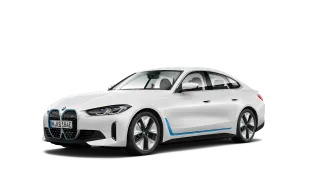
|
Battery Capacity: 68 kWh Elec. consump. combined: 15.8 - 18.7 kWh/100km Charging Time (from 0% up to 80%): 65 mins (50kw, DC) Above information provided by car dealership
More
|
||||||||||||||||||||||||||||
BMW i4 eDrive40
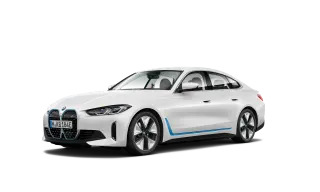
|
Battery Capacity: 80.7 kWh Elec. consump. combined: 16.1 - 19.1 kWh/100km Charging Time (from 0% up to 80%): 77 mins (50kw, DC) Above information provided by car dealership |
BMW i4 M50
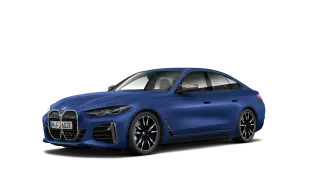
|
Battery Capacity: 80.7 kWh Elec. consump. combined: 18.1 - 22.5 kWh/100km Charging Time (from 0% up to 80%): 77 mins (50kw, DC) Above information provided by car dealership |
BMW iX1 xDrive30
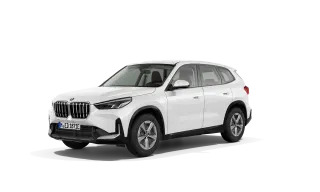
|
Battery Capacity: 64.7 kWh Elec. consump. combined: 16.9 - 18.1 kWh/100km Charging Time (from 0% up to 80%): 62 mins (50kw, DC) Above information provided by car dealership |
BMW iX3
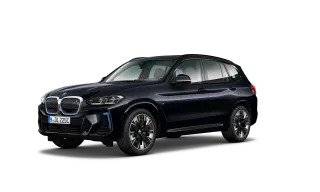
|
Battery Capacity: 73.8 kWh Elec. consump. combined: 18.5 - 18.9 kWh/100km Charging Time (from 0% up to 80%): 71 mins (50kw, DC) Above information provided by car dealership |
BMW iX xDrive40

|
Battery Capacity: 71 kWh Elec. consump. combined: 19.4 - 21.4 kWh/100km Charging Time (from 0% up to 80%): 68 mins (50kw, DC) Above information provided by car dealership |
BMW iX xDrive50
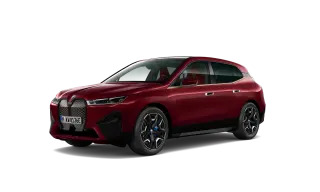
|
Battery Capacity: 105.3 kWh Elec. consump. combined: 19.5 - 21.2 kWh/100km Charging Time (from 0% up to 80%): 101 mins (50kw, DC) Above information provided by car dealership |
BMW iX M60
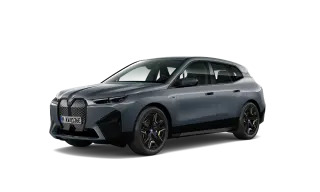
|
Battery Capacity: 105.3 kWh Elec. consump. combined: 21.9 - 24.7 kWh/100km Charging Time (from 0% up to 80%): 101 mins (50kw, DC) Above information provided by car dealership |
BMW i7
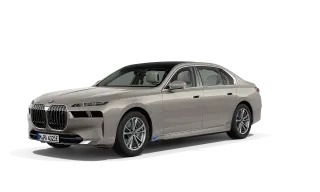
|
Battery Capacity: 101.7 kWh Elec. consump. combined: 18.4 - 19.6 kWh/100km Charging Time (from 0% up to 80%): 98 mins (50kw, DC) Above information provided by car dealership |
MINI Electric
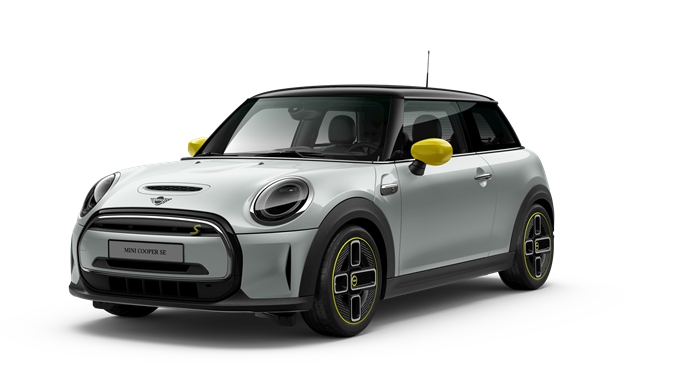
|
Battery Capacity: 28.9 kWh Elec. consump. combined: 15.3 - 17.6 kWh/100km Charging Time (from 0% up to 80%): 28 mins (50kw, DC) Above information provided by car dealership
|
Hyundai KONA Electric
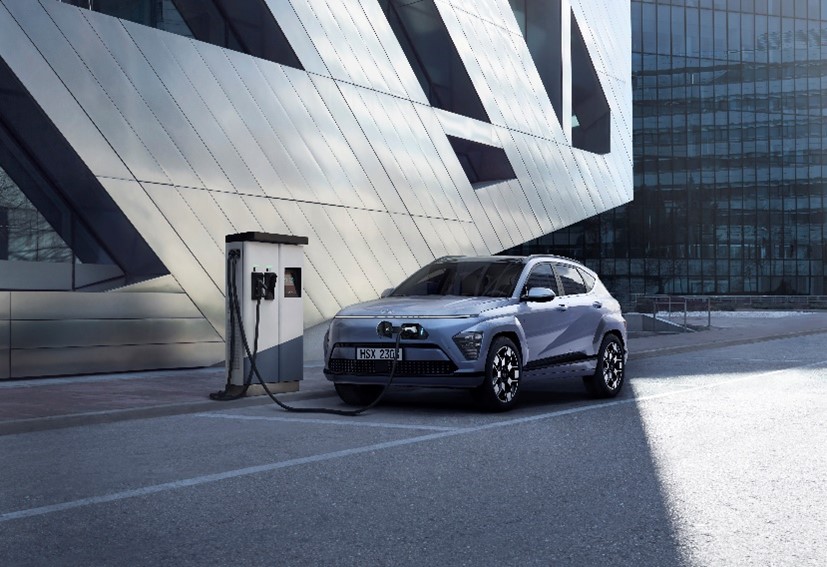
|
Battery Capacity: 48.4 - 65.4 kWh Elec. consump. combined: 11.75 kWh/100km Charging Time (from 10% up to 80%): 38 - 41 mins (50kw, DC) Above information provided by car dealership |
Maxus eDELIVER 3
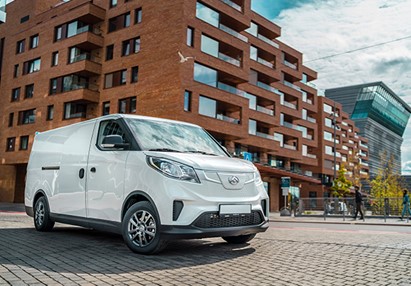
|
Battery Capacity: 50.23 kWh Elec. consump. combined: 13.92 kWh/100km Charging Time (from 20% up to 80%): 30 mins (50kw, DC) Above information provided by car dealership
|
Maxus MIFA 9 ELITE/ LUXURY / PREMIUM
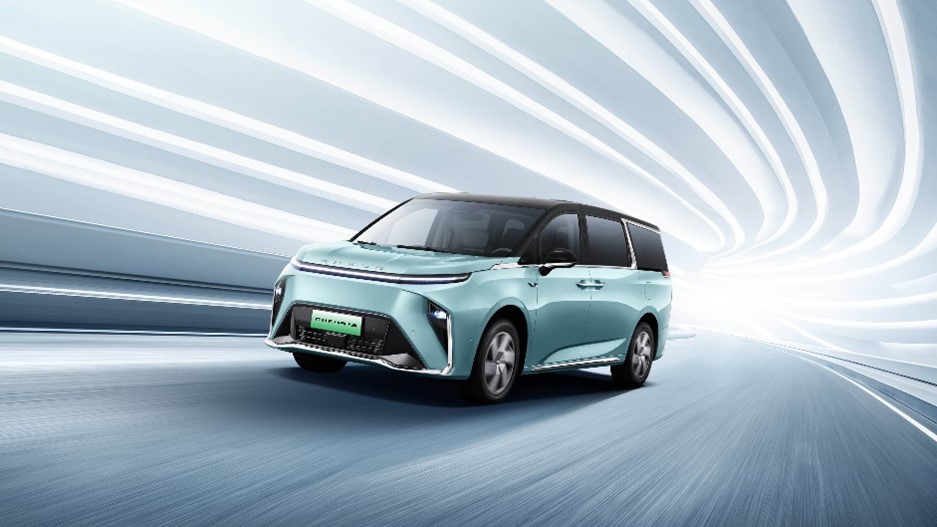
|
Battery Capacity: 90 kWh Elec. consump. combined: 17.1 kWh/100km Charging Time (from 30% up to 80%): 40 mins (50kw, DC) Above information provided by car dealership
|
Hyundai IONIQ 6
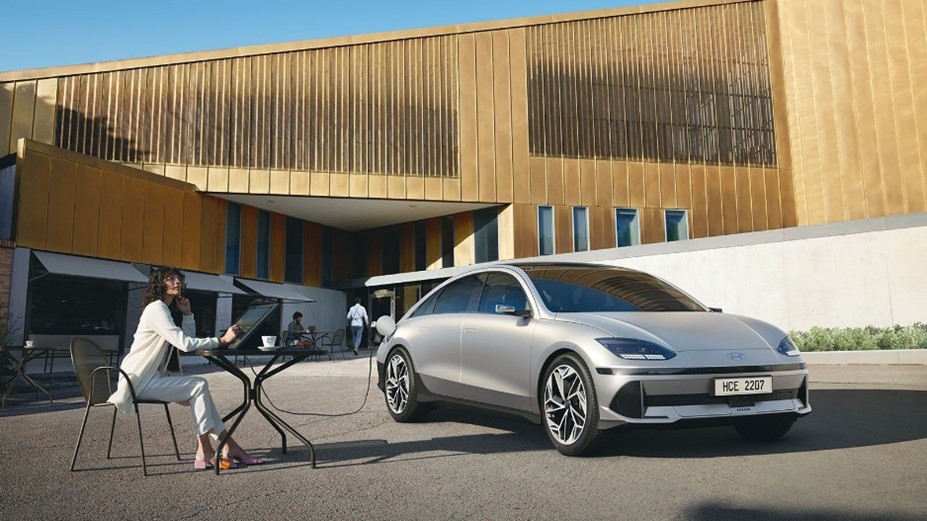
|
Battery Capacity: 77.4 kWh Elec. consump. combined: 13.6 kWh/100km Charging Time (from 10% up to 80%): 73 mins (50kw, DC) Above information provided by car dealership |
NIO ET5
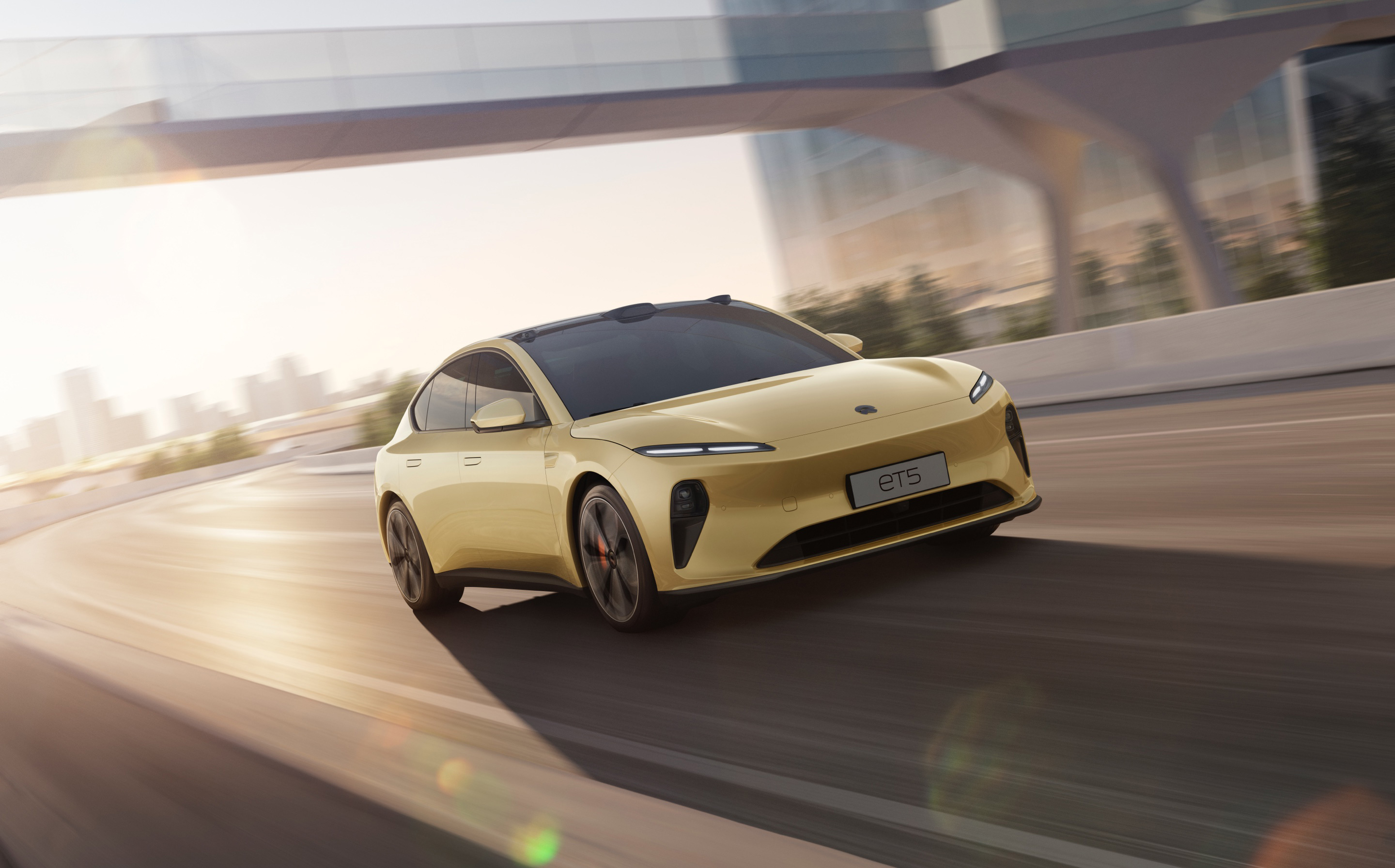
|
Battery Capacity: 75 - 100kWh Elec. consump. combined: 13.7 (kWh)/100km Charging Times (for 10 - 80% charge): around 0.6 hour from fast charging station (180kW, DC) Above information provided by car dealership |
NIO ET7
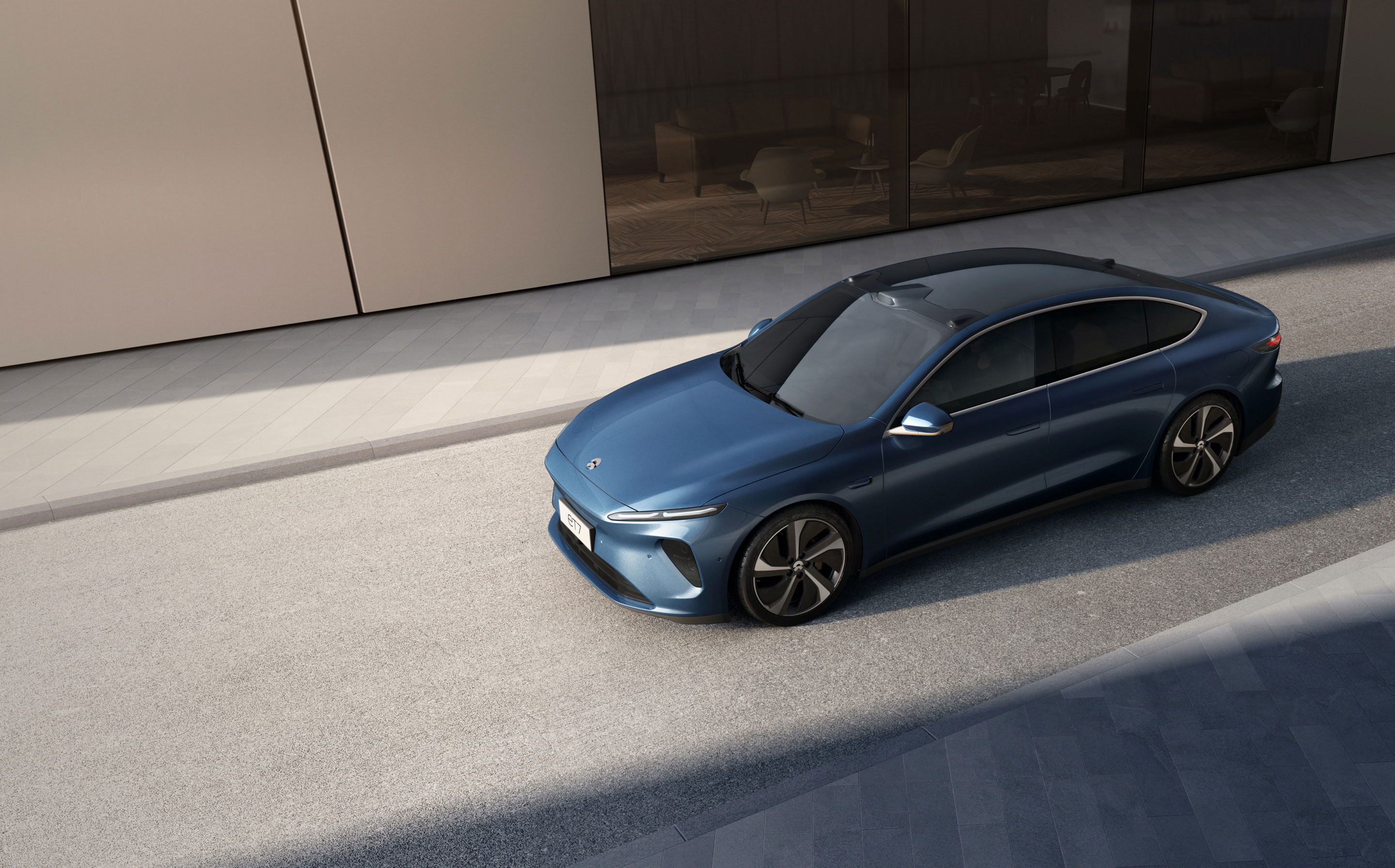
|
Battery Capacity: 75 - 100kWh Elec. consump. combined: 13.7 (kWh)/100km Charging Times (for 10 - 80% charge): around 0.6 hour from fast charging station (180kW, DC) Above information provided by car dealership |
NIO EC6
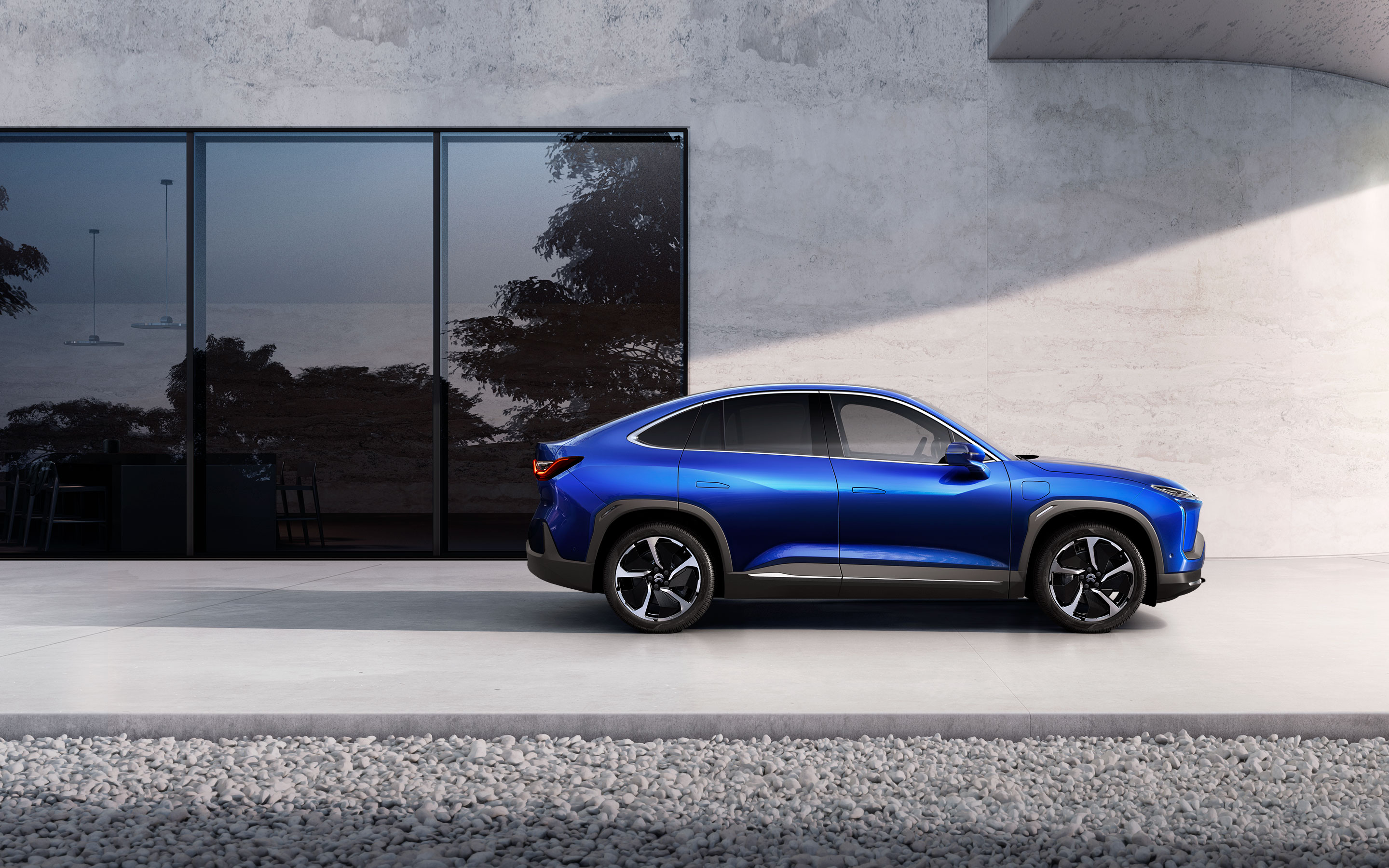
|
Battery Capacity: 75 - 100kWh Elec. consump. combined: 16.2 (kWh)/100km Charging Times (for 10 - 80% charge): around 0.6 hour from fast charging station (180kW, DC) Above information provided by car dealership |
NIO ES6
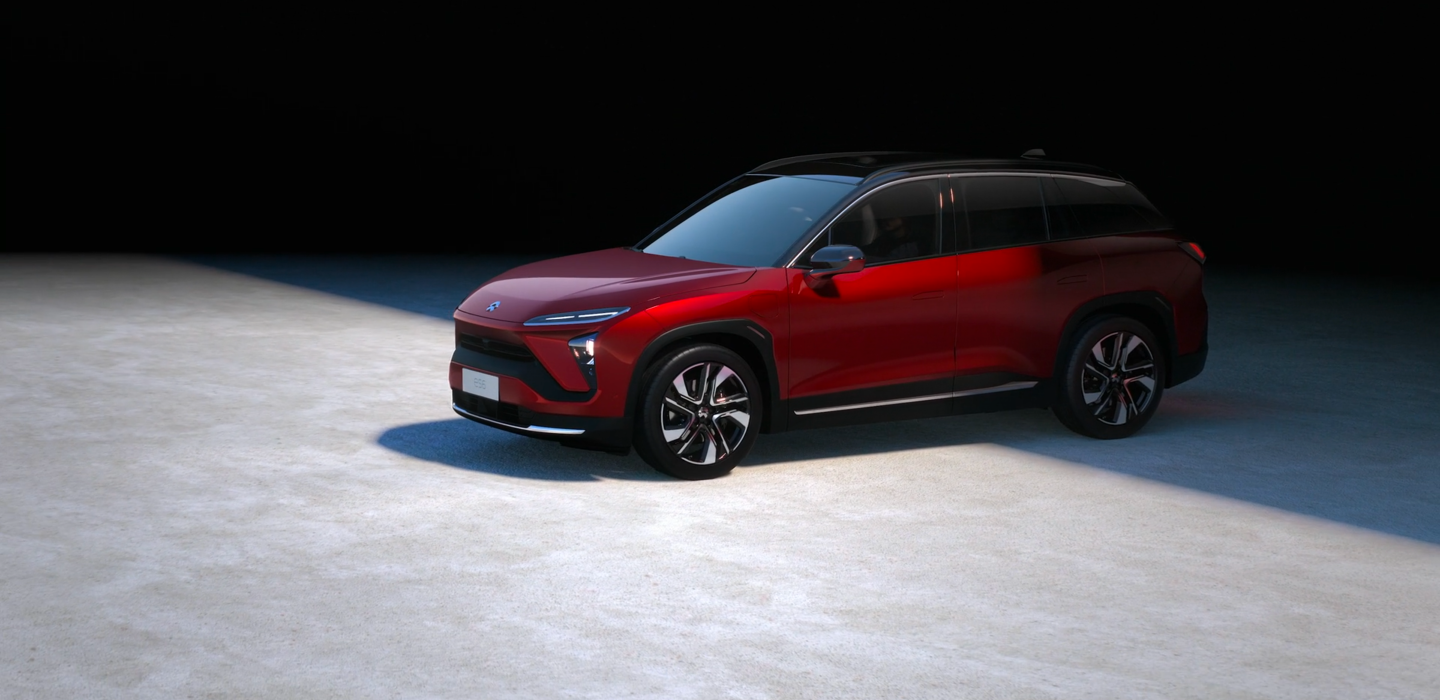
|
Battery Capacity: 75 - 100kWh Elec. consump. combined: 16.2 (kWh)/100km Charging Times (for 10 - 80% charge): around 0.6 hour from fast charging station (180kW, DC) Above information provided by car dealership |
NIO ES8
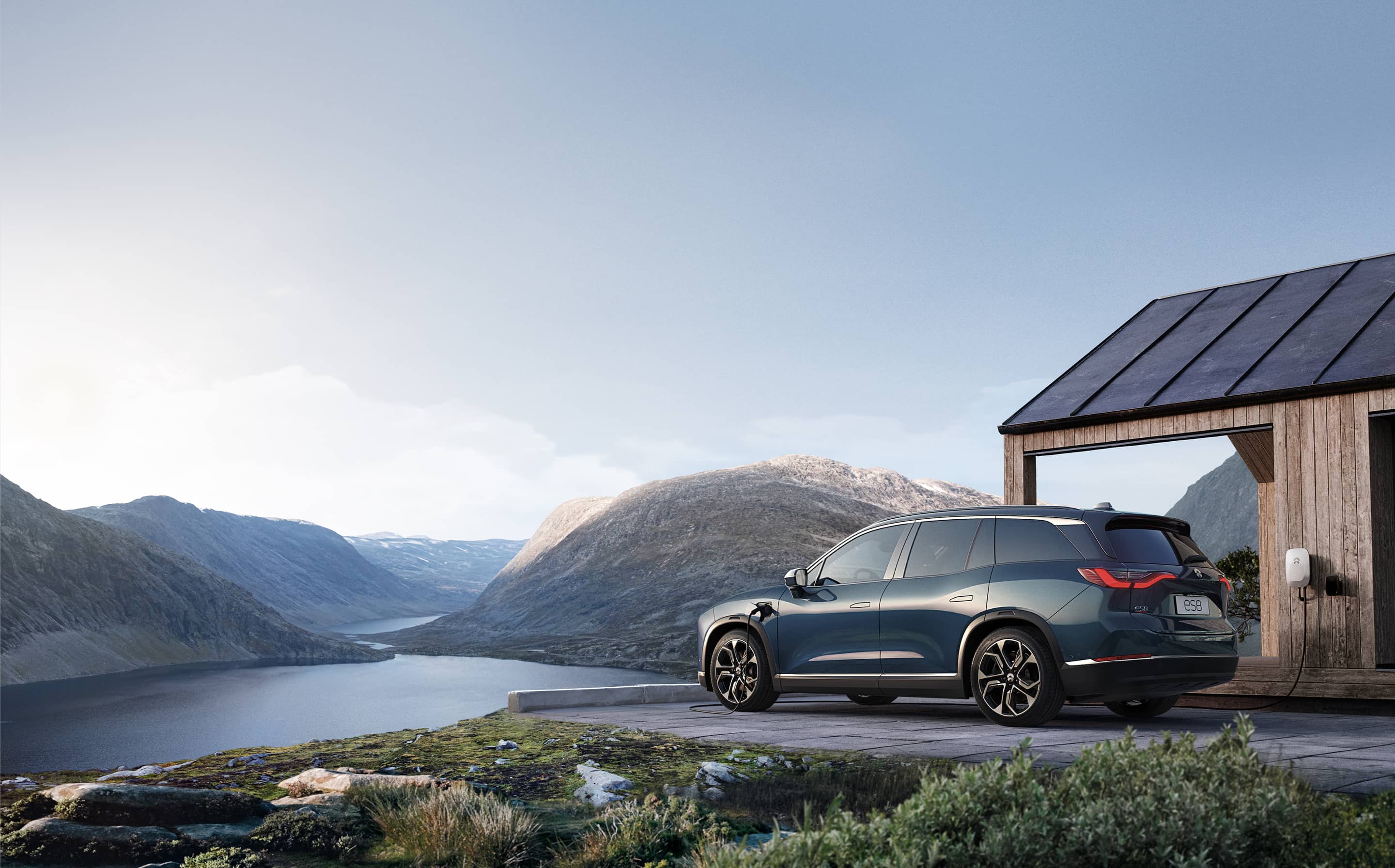
|
Battery Capacity: 75 - 100kWh Elec. consump. combined: 16.6 (kWh)/100km Charging Times (for 10 - 80% charge): around 0.6 hour from fast charging station (180kW, DC) Above information provided by car dealership |
Mercedes-Benz EQS 450+
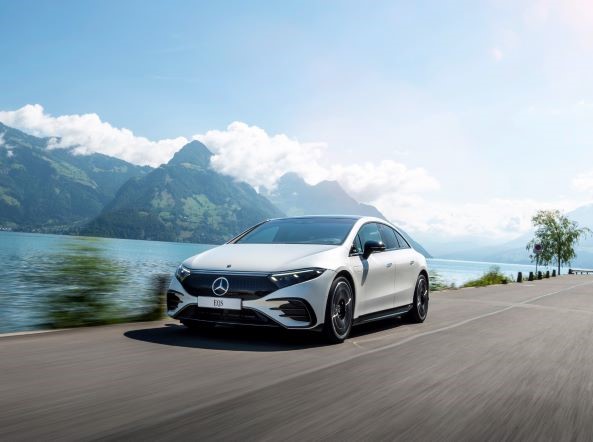
|
Battery Capacity: 107.8kWh Elec. consump. combined: 19.8 - 15.8(kWh)/100km Charging Times (for 10 - 80% charge): around 100mins from fast charging station (50kW, DC) Above information provided by car dealership |
Mercedes-Benz EQA
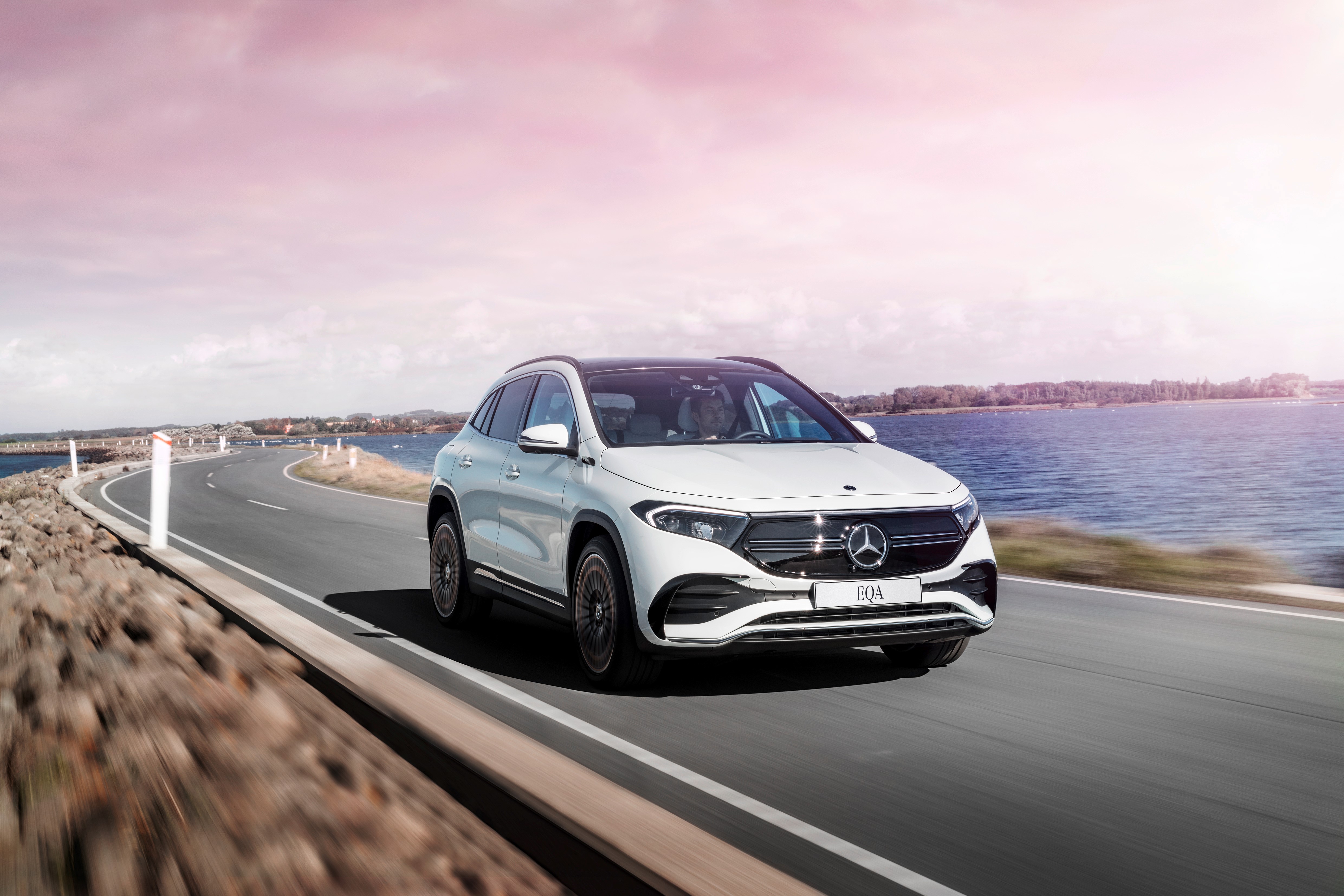
|
Battery Capacity: 66.5kWh Elec. consump. combined: 17.7(kWh)/100km Charging Times (for 10 - 80% charge): around 1 hours from fast charging station (50kW, DC) Above information provided by car dealership |
Jaguar I-PACE
|
|
Battery Capacity: 90 kWh Elec. consump. combined: 22 - 25.2 kWh/100km Charging Time (from 10% up to 80%): 110 mins (50kw, DC) Above information provided by car dealership |
Hyundai IONIQ 5 2WD/4WD
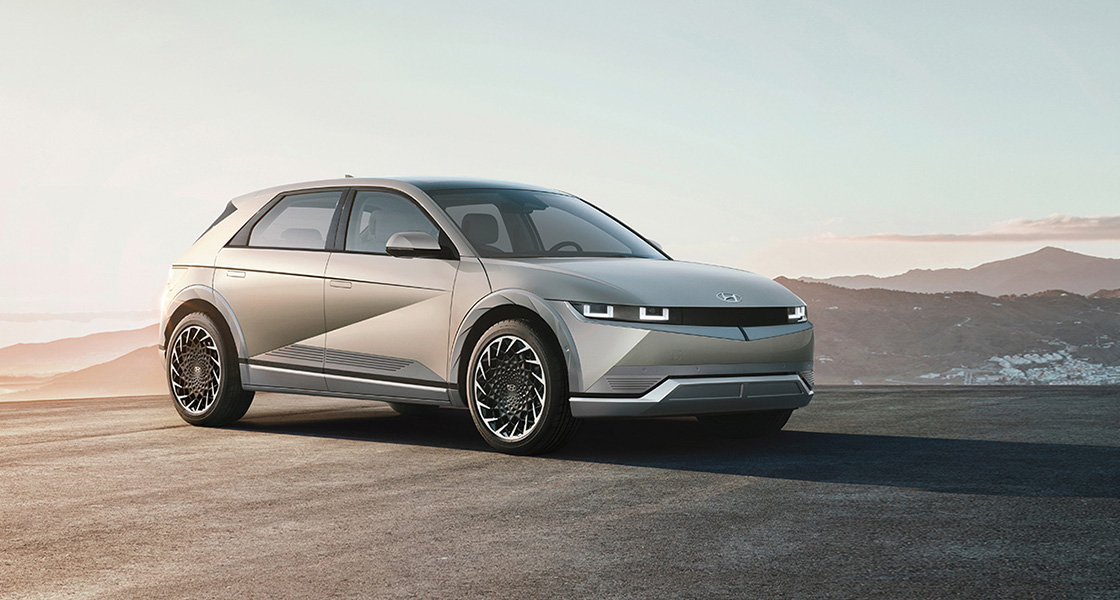
|
Battery Capacity: 58 - 77.4 kWh Elec. consump. combined: 15.38 kWh/100km Charging Time (from 10% up to 80%): 57 mins (50kw, DC) Above information provided by car dealership
|
Hyundai KONA Electric

|
Battery Capacity: 39.2 - 64 kWh Elec. consump. combined: 11.75 kWh/100km Charging Time (from 10% up to 80%): 48 - 64 mins (50kw, DC) Above information provided by car dealership
|
Hyundai KONA Electric Long Range
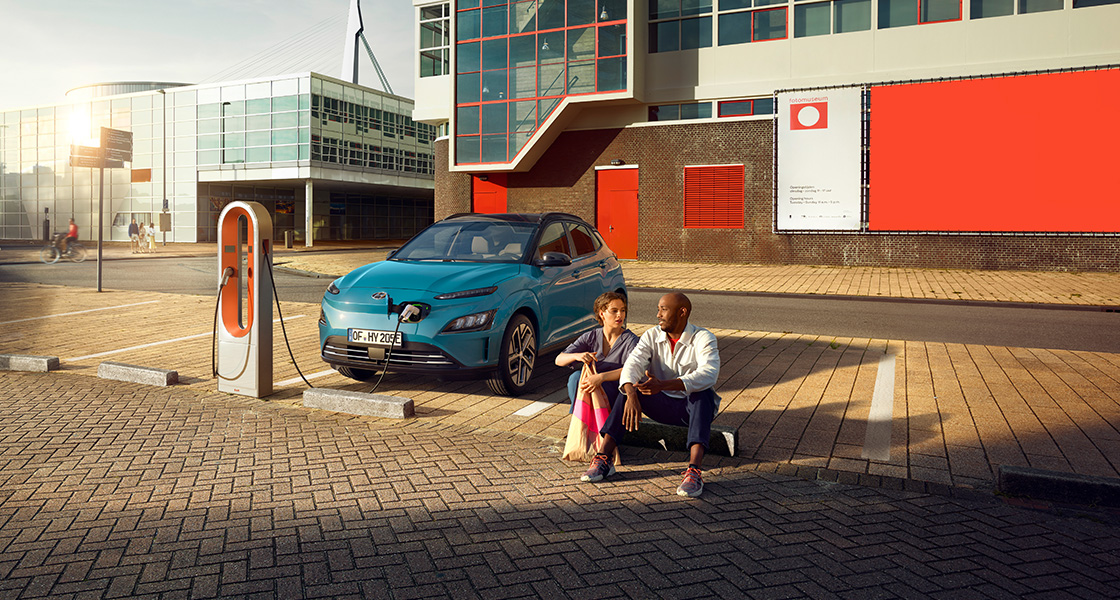
|
Gross Battery Capacity: 64.0 kWh Elec. consump. combined: 147 Wh/km Charging Time (from 10% up to 80%): 64 mins (50kw, DC) Above information provided by car dealership
|
Hyundai IONIQ Electric

|
Gross Battery Capacity: 38.3 kWh Elec. consump. combined: 117 Wh/km Charging Time (from 10% up to 80%): 57 mins (50kw, DC) Above information provided by car dealership |
Audi e-tron 55 quattro
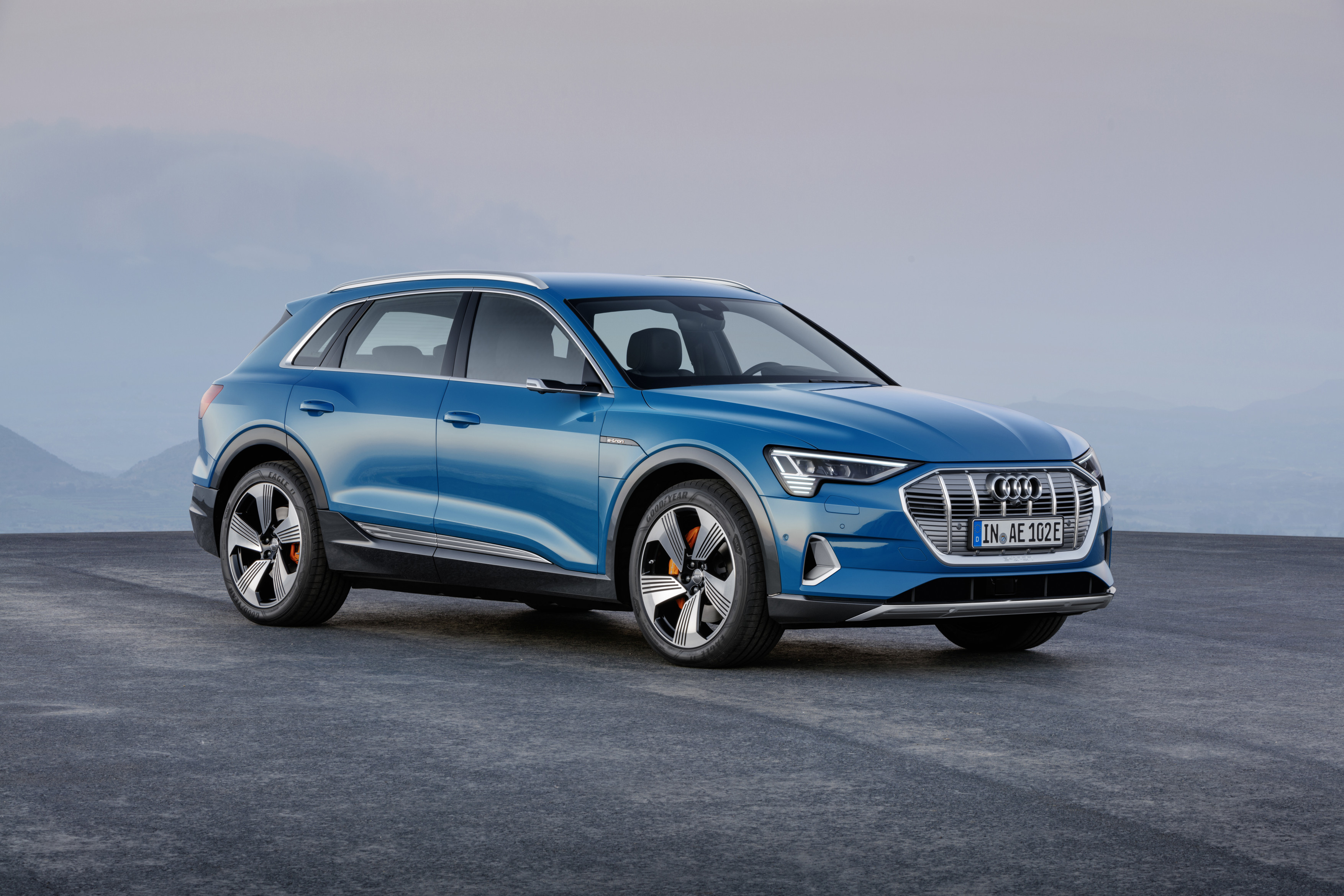
|
Battery Capacity : 95 kWh Consumption : 22.6 – 26.1 kWh/100 km (WLTP) Above information provided by car dealership
|
Porsche Taycan
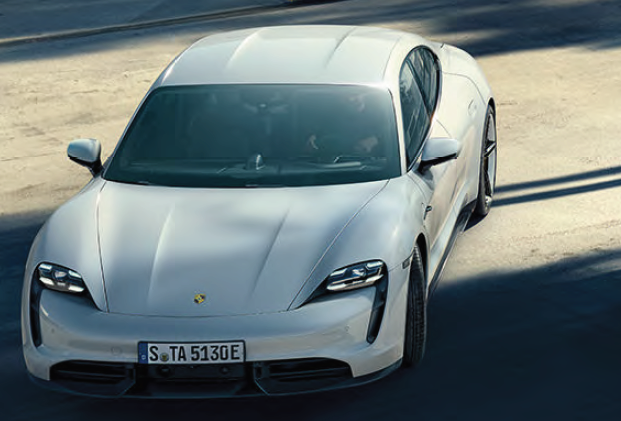
|
Gross Battery Capacity: 93.4 kWh Net Battery Capacity: 83.7 kWh Elec. consump. combined: 26.0 - 26.9 kWh/100km Charging Time (from 5% up to 80%): 93 mins (50kw, DC) Above information provided by car dealership
|
Mercedes-Benz EQC 400
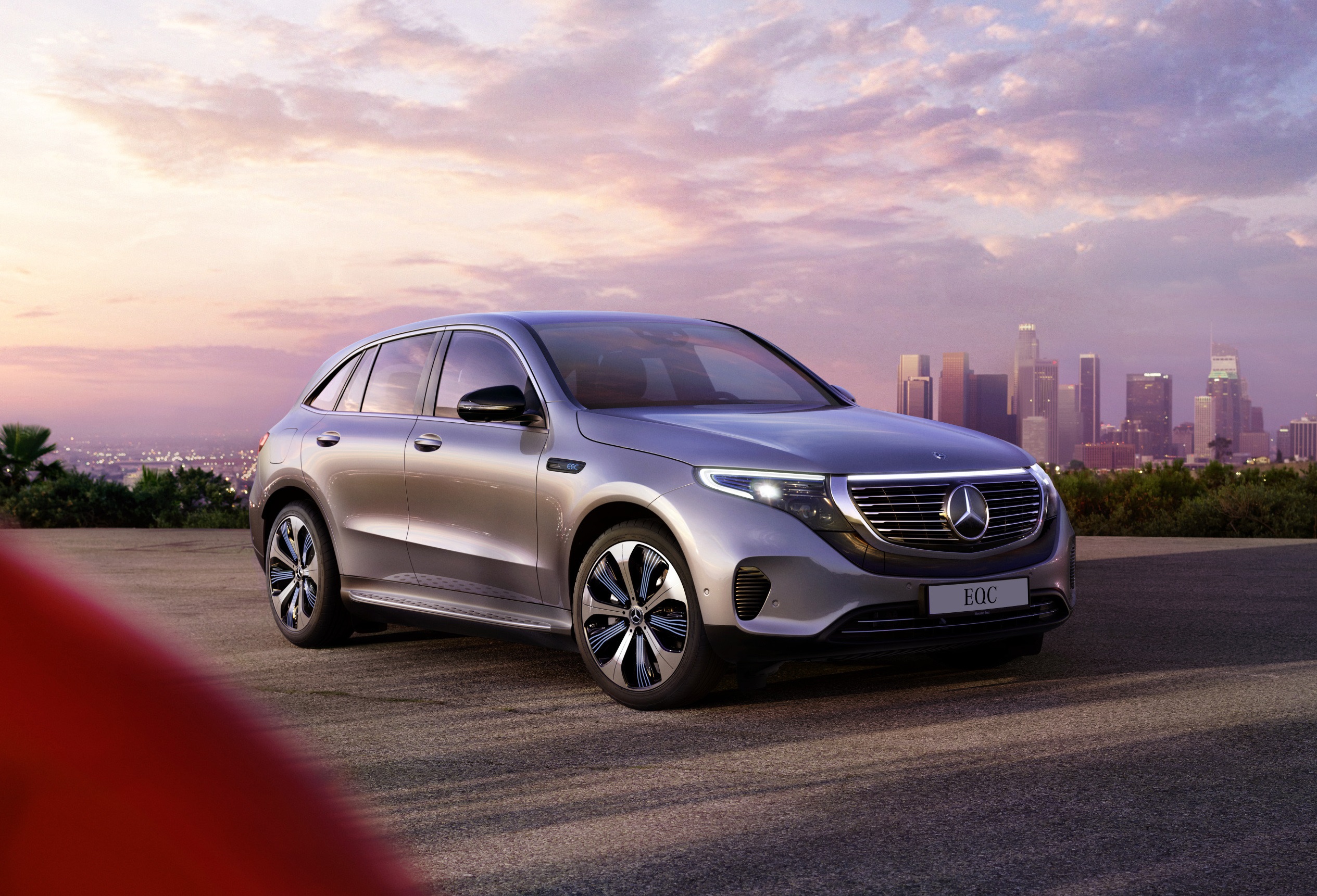
|
Battery Capacity: 80.0kWh Elec. consump. combined: 22.2(kWh)/100km Charging Times (for 10 - 100% charge): around 2 hours from fast charging station (50kW, DC), around 11.00 h from domestic socket (7.4kW, AC) Above information provided by car dealership |
Upgrading electric motorcycle charging sockets across Macau
CEM is currently upgrading electric motorcycle charging sockets across Macau, converting all existing sockets to GB/T and BS standard sockets specifications to provide safer and smarter charging services for vehicle owners:
New features include:
- Temperature Monitoring
- Built-in temperature sensors automatically stop charging when abnormal heat is detected at the socket location
- Prevent secondary disasters caused by overheating
- Overcurrent Detection
- Halt charging immediately upon detecting short circuits or excessive current
- Prevent misuse of charging sockets and avoid potential risks
- Smart Management
- Integrate with CEM's central charging management system for real-time monitoring
- Enable remote management of charging services, tracking, and follow-up on abnormal charging records
Cooperation between CEM and CSPG for convenient charging of electric vehicles heading north to the mainland
Source: Macao Daily News
Release Date: 08 November 2024
(ONLY AVAILABLE IN CHINESES)
澳門電力股份有限公司昨發新聞稿表示,為配合澳門特區政府綠色出行政策與智慧綠色城市建設,一直致力完善電動車充電網絡及向居民宣傳使用電動車的好處及重要性。澳電再次成為今日開幕的中國(澳門)國際汽車博覽會參展單位之一,冀向居民進一步推廣電動車的應用及充電的便捷性。
新聞稿提到,澳電展位以“驅創綠色生活”為主題,展出兩款現行的慢充及快充充電樁,展館內更加入互動元素,居民可透過磁貼等道具,在展板上體驗為電動車充電的四個步驟,包括下載“澳電APP”、掃描充電樁上二維碼、插入充電插頭、選擇“開始充電”。希望讓居民模擬以“澳電APP”充電全過程,操作非常便捷,一目了然,藉此鼓勵居民購車時首選電動車。
澳電至今已於六十個公共停車場安裝電動車充電站,總充電基礎設施達二千個,支持國標、歐標及日標標準;此外,更於四十九個公共停車場裝設六百個電動電單車充電位,覆蓋率分別達百分之九十七及百分之九十四,當中一千三百三十三座充電樁已開放使用,為電動車出行及運輸發展打下良好的基礎。
車主透過“澳電APP”可即時查找可用之充電樁,及透過電子錢包充值功能即時付款,方便快捷。為方便電動車車主北上,澳電與中國南方電網合作,將其充電平台“順易充”加到“澳電APP”,車主享受無縫整合的充電便利體驗。
Seminar explores safe charging of electric vehicles
Source: Macao Daily News
Release Date: 30 August 2024
(ONLY AVAILABLE IN CHINESES)
隨著電動車輛在澳門迅速普及,相關安全問題日益受到社會關注。為加強各界對電動車輛使用及充電安全的認知,澳門電力股份有限公司與澳門機電工程師學會,今日下午3時假澳門科學館會議廳合辦“電動車輛充電安全技術研討會”,邀請香港機電工程署、澳門消防局、澳門機電工程師學會及澳電代表演講及討論,主題涵蓋澳門充電設施的安全標準及網絡、動力電池技術、電動車輛充電意外的成因及消防安全探討等。
澳電執行委員會主席梁華權表示,為實現國家的雙碳目標,澳電積極配合政府的綠色出行政策。澳電已於全澳公共停車場2,000個電動車及600個電動電單車位安裝充電樁,覆蓋率分別達97%及94%,為電動車輛出行及運輸發展打下良好的基礎。然而,近月在本澳及鄰近地區連續發生多宗電動車輛引致的火警事故,引起各界的高度關注。如何規範充電基礎設施建設、提高車主的安全使用意識,是當前亟需探討及解決的問題。
澳門機電工程師學會會長鄺偉文表示,作為業界與政府之間的橋樑,澳門機電工程師學會將繼續秉持創新與責任,為會員和業界提供交流平台,推動行業標準的制定與完善,為電動車輛充電安全貢獻力量。
澳門機電工程師學會理事長馮德祥表示,講座深度探討了電動車領域的電池技術、充電安全、將來會面對的挑戰及可以採取的措施等多個關鍵議題,希望未來與各界能夠有更多交流與合作,共同推動電動車安全技術在澳發展,確保電動車在道路上更安全可靠。
Macao Special Administrative Region Government will reduce the charging fees of Tariff for Electric Means of Transport
Source: Direcção dos Serviços de Protecção Ambiental (DSPA)
Release Date: 22 Apr 2024
(ONLY AVAILABLE IN CHINESES & PORTUGUES)
特區政府公佈第66/2024號行政長官批示,調整運輸工具充電收費,下調中、快速公共充電收費的電能費用,並將慢速充電的「非繁忙時間」提前三小時(由晚上11:00提前至晚上8:00)開始。有關行政長官批示將於2024年5月1日起生效。
是次調整是將公共充電收費中的中速[1]和快速[2]電能費用分別下調為每千瓦時2.980澳門元及3.440澳門元。同時,為簡化計算及提升充電體驗,中、快速公共充電收費的時間不再區分前段及後段。調整後,電能費用降幅最大達24.4%。至於電能費用加收費調整系數(0.39澳門元)後的總電價,最低(即慢速、非繁忙時間)為每千瓦時1.810澳門元,最高(快速)為每千瓦時3.830澳門元(詳見附表)。
另外,公共充電收費的慢速充電及一般充電收費(適用於私人停車場)的「非繁忙時間」,將由原本的晚上11:00至翌日上午9:00,修訂為晚上8:00至翌日上午9:00,更能配合充電用戶的生活習慣。
修訂後,本澳的電動車公共充電收費將較香港特別行政區現行收費低,特區政府期望以此進一步推廣電動車輛在澳門的使用,並鼓勵電動車用戶於「非繁忙時間」充電。為配合《澳門長期減碳策略》,特區政府將繼續督促專營公司完善公共充電網絡,並持續關注全球電動車的發展趨勢。
[1] 額定輸出功率高於7.4千瓦但不高於25千瓦。
[2] 額定輸出功率高於25千瓦。
DSPA: Supply and demand of EV charging stations balance
Source: Macao Daily News
Release Date: 16 August 2023
(ONLY AVAILABLE IN CHINESES)
環境保護局長譚偉文表示,政府過去透過電動車免稅政策、於公共停車場加裝充電樁,推動居民使用電動車。目前新登記車輛中,電動車比例較高,說明居民逐步選擇電動車作為交通工具。
譚偉文表示,目前澳門共有三千多輛電動輕型汽車,二千多輛電動重型及輕型摩托車。全澳公共停車場共安裝超過兩千個輕型汽車充電樁,已啟用一千二百個,加上大型休閒綜合體均有充電樁,相信暫時供需平衡。充電樁未完全開放,是因應平衡電油車使用者需求,未來將視乎實際增加安裝。
創條件私樓裝充電樁
現時社會普遍關注在私人樓宇安裝充電樁較困難,其中牽涉《民法典》相關規定,當局會想辦法創造條件,克服難題,如修改建築條例,令新建樓宇可做到每個車位均可安裝充電樁。
另外,立法會早前簽署有關新能源車輛政策的意見書,其中涉及訂定停止石化燃料車輛的新登記和限制行駛的時間表。譚偉文表示,將參考鄰近先進地區,就限制石化原料車輛使用進行研究,結合澳門情況推出相應政策。
Public charging stations to rise to 2,000 by year-end -CEM
Source: Macao Daily News
Release Date: 2 November 2022
Yuki Lei Taipa and Coloane Community Service Consultative Council member Leong Chon Kit yesterday quoted power utility CEM representatives as saying that the total number of public charging stations for electric vehicles will increase from 495 to 2,000 by the end of this year, adding that the charging points are mainly in the city's public car parks run by the Transport Bureau (DSAT) and Municipal Affairs Bureau (IAM).
Leong made the remarks during a press briefing after the government-appointed council's regular closed-door meeting with CEM representatives at the Seac Pai Van Community Integrated Building in Coloane yesterday.
Leong noted that most of the 2,000 charging stations will be slow charging, adding that most vehicle owners had switched to slow charging since charging for electric vehicles came into effect in July, which has exceeded demand for fast charging.
According to the representative, the Environmental Protection Bureau (DSPA) has recently issued guidelines on applications for charging stations in private car parks, Leong said, noting that as of Sunday, CEM had received 208 applications, of which 155 had already installed electricity meters at their respective car parks.
Leong pointed out that among the 495 existing charging stations, 74 percent were installed in the Macau peninsula, while Taipa and Coloane accounted for 17 percent and 9 percent respectively.
The Administrative Regulations on "Public Service Charge System for Electricity Supply" will come into effect in late July
Source: Government Information Bureau of the Macau SAR
Release Date: 28 June 2022
(ONLY AVAILABLE IN CHINESES)
澳門特別行政區公報》今日刊登第25/2022號行政法規《電力供應公共服務收費制度》,法規將於2022年7月28日起正式生效。
特區政府積極開展環保工作,為推動節能減排並逐步引入清潔能源,按未來電動車應用方向,新建公共停車場、公共樓宇的全部停車位將預留充電容量及基礎設施,並完善現有公共充電基礎設施及推動於私人樓宇中加裝充電設施。同時,鑑於現行第35/86/M號法令訂定的計算電力出售價格收費辦法制度實施已久,為落實"用者自付"及"多用多付"原則,特區政府制定《電力供應公共服務收費制度》行政法規,並廢止第35/86/M號法令。
法規主要內容為完善電力供應公共服務收費制度,訂定各收費類別計費的公式和收費時段,新增高壓收費組別。此外,新增運輸工具充電收費,根據耗電特點分為公共充電收費及一般充電收費。有關級別、階梯及收費的具體規定由第105/2022號行政長官批示訂定。
根據有關行政長官批示,於公共停車場或公共泊車處為運輸工具進行充電,按收費時段及額定輸出功率,有功電能的費用為1.420澳門元/千瓦時至4.400澳門元/千瓦時,一般充電的有功電能費用為0.817澳門元/千瓦時至1.552澳門元/千瓦時,並須按用戶合同計算視在功率的費用。另外,除了公共照明收費按相關法規的規定而調整,其他收費組別的收費維持不變。
環境保護局會聯同相關部門、機構繼續推動節能減排等工作,進一步改善空氣質素和落實"雙碳目標"。
Installed charging stations of two charging standards in 16 car parks
Source: Macao Daily News
Release Date: 6 April 2022
(ONLY AVAILABLE IN CHINESES)
為配合特區政府推動綠色出行和電動車應用,澳門電力股份有限公司將於本澳十六個公衆停車場陸續增設國標及歐標兩款充電制式的充電樁。當中氹仔中央公園停車場、望賢樓停車場及快富樓停車場的充電樁已於本月三日啓用,其餘充電設施將於第二季內陸續投入服務。
澳電目前已於全澳四十六個公共停車場內設置電動車充電車位,支持不同速度及充電制式,包括IEC Type 2、CHAdeMO、BS、CCS2及國標。新增兩款充電制式充電樁的十六個停車場包括河邊新街停車場、栢寧停車場、李加祿街停車場、下環街市停車場、沙梨頭街市市政綜合大樓停車場、華士古達嘉馬花園停車場、海灣南街停車場、青濤大廈停車場、麗都停車場、望賢樓停車場、交通事務局大樓停車場、望善樓停車場、快富樓停車場、快盈大廈停車場、氹仔黑橋街停車場及氹仔中央公園停車場。
澳電APP方便居民
除了積極配合特區政府規劃電動車充電設施外,澳電亦不斷加強軟件功能,全新“澳電APP”已於早前上線。車主毋須每次登入,只需掃描充電樁上的二維碼即可充電,還可實時查看充電情況,為車主提供更便捷的充電體驗。澳電將根據使用情況不斷優化充電設備以及分佈,為居民的綠色出行提供動力,共建低碳智慧澳門。
此外,特區政府已在十個公共停車場內裝設及向公衆開放電動電單車充電位,包括交通事務局大樓停車場、樂群樓停車場、關閘綜合體育場館停車場、何賢公園停車場、快富樓公共停車場、青洲坊大廈停車場、望善樓停車場、望賢樓停車場、亞馬喇前地停車場及氹仔中央公園停車場。
The new charging spaces adopts the international standard system
Source: Macao Daily News
Release Date: 6 April 2022
(ONLY AVAILABLE IN CHINESES)
澳電為配合政府近日推出的《淘汰老舊摩托車並置換新電動摩托車資助計劃》,將在本澳十個公共停車場增設五十個電動電單車的充電設施作先導計劃。並稱電動電單車電池容量細,13A充電插座已足夠。又指今年新增的電動車充電位將會引入國標充電制式,以慢充為主,全力配合政府計劃,推動綠色出行。
早前電力客戶諮詢委員會於例會透露,為支持政府近日推出《淘汰老舊摩托車並置換新電動摩托車資助計劃》,澳電配合政府將在本澳十個公共停車場增設五十個電動電動車的充電設施作先導計劃。其中青洲坊大廈、快富樓及亞馬喇前地停車場共十五個充電位前日起已投入使用。
電摩13A插座夠用
餘下的七個車場,澳電回覆本報表示,按照政府規劃,餘下七個車場為何賢公園、關閘綜合體育館、望善樓、望賢樓、交通事務局大樓、氹仔中央公園及樂群樓。並稱電動電單車電池容量細,13A充電插座已足夠。
澳電曾表示將於今年在全澳五十六個公共停車場增加電動車充電位,問到預計是多少個充電位及地區分佈比例?充電制式是否適用於各款電動車?澳電則表示,將全力配合政府計劃,推動綠色出行。今年新增的電動車充電位將會引入國標充電制式,以慢充為主。關於換電方面,由於現時電池沒有統一的標準,不同品牌的車商會因應其市場需要自行提供相關服務。
百一私人車位已裝
澳電表示,至今年三月底共有一百一十三個私人停車位安裝充電設備。
The annual utilisation rate of charging stations is 17% and will be expanded to all public car parks by the end of the year
Source: Hou Kong Daily News
Release Date: 12 February 2022
(ONLY AVAILABLE IN CHINESES)
有傳本澳電動車充電位即將實行收費,負責安裝及管理公共電動車充電設施的澳電表示,有關電動車的公共充電收費的實行及時間表,特區政府現時仍在收集意見階段,完成後會適時公佈。
澳電表示,現時澳電於全澳42個公共停車場及7條公共街道,為200個電動車車位提供公共充電服務,各充電站的使用率(按充電時間計算)由2021年初的14%,穩定增長至2021年底的19%,全年整體使用率為17%。為進一步推動電動車的普及,澳電將繼續全力配合特區政府,為配合澳門特區政府實現綠色運輸普及化的目標做好準備。為完善電動車充電配套,澳電引入中國國家標準充電制式,電動車充電網絡將於2022年擴展到澳門所有的公共停車場,並在較大型的公共停車場應用智慧充電網絡管理技術,讓充電基建可更有效地分配電力。
被問及私人樓宇設置電動車充電裝置存在的難題,澳電表示,對於現有建築物的私人停車位,澳電去年共為客戶免費提供152次供電可行性分析,讓客戶了解其建築物對電動車充電設施的可用供電方式及容量。而對於新建建築物停車位,澳電已於2018年修訂《建築物電器裝置低壓供電一般技術要求》,要求新建建築物內停車場必須配備電動車充電基礎建設(如電纜托架、電箱、分線箱及電錶箱等)及預留電量;按現行的供電技術規範,新建大廈停車場須100%配備充電基礎設施。
CEM's charging facilitie at the automobile exposition, and cover 80% of public car parks
Source: Macao Daily News
Release Date: 12 November 2021
(ONLY AVAILABLE IN CHINESES)
澳門電力股份有限公司表示,澳電參與第十一屆中國(澳門)汽車博覽會,並設置展位,介紹電動車充電設施的資訊和未來發展規劃,並設現場示範充電操作,配合澳門特區政府推動綠色出行和電動車應用,助建智慧綠色城市。
澳電展位的設計以“驅動智慧未來”為主題,現場展出兩台充電設備,分別支援慢充和快充2種模式,功率涵蓋7千瓦、11千瓦、22千瓦,適用於各種不同充電功率的車型和CCS2,CHAdeMo和Type2充電插口。
澳電一直積極推動使用電動車及拓展其充電網絡,目前於澳門、氹仔及路環的42個公共停車場內及7條街道已設置電動車充電車位,公共停車場覆蓋率近80%,涵蓋大部分電動車充電插口標準。澳電將致力進一步提高覆蓋率,並引入中國國家標準充電制式,以及在較大型的公共停車場應用智慧充電網絡管理技術,讓充電基建可更有效地分配電力。
按2018年修訂的供電技術規範,新建大廈停車場須100%配備充電基礎設施,如電線托架、電櫃等以完善裝置充電設施的配套,鼓勵公眾加入綠色駕駛行列。另外,現時私人屋苑欠缺配備充電設施,未來主要透過安裝標準充電設施,方便電動私家車車主利用在住宅及辦公附近停車時段充電。
為響應環保,實現“無卡化充電流程”,澳電於2020年以手機APP取代原有的電動車卡,並於2021年9月於澳電微信推出“電動車充電”,車主只需要關注“澳電微信”及綁定澳電網上服務賬戶,便無需逐次登入即可輕鬆充電。市民在前往充電前,亦可以先於網站或澳電手機APP查閱電動車充電站的使用狀況。
CEM adds 200 charging stations in two years and introduces national standard smart charging network management technology
Source: Macao Daily News
Release Date: 4 November 2021
(ONLY AVAILABLE IN CHINESES)
第九屆電力客戶諮詢委員會昨舉行例會,委員會主席黃國勝會後稱,目前本澳公共停車場充電位約二百個,澳電計劃二零二三年或之前倍增二百個充電位至總數不少於四百個。
電諮會昨日上午十一時假段澳門旅遊塔會展娛樂中心四樓禮堂舉行例會,黃國勝,副主席黃健中及張健中、顧問阮毓明,澳電執行委員會主席梁華權,首席顧問岳宗斌及一眾委員出席。會上由澳電輸配電站及供電高級經理黃昭婷介紹“電動車公共充電服務”、客戶服務部技術服務管理科高級經理周環宙介紹“低層舊廈公共電力裝置安全升級計劃”進展,各委員代表所屬社團向澳電提出不同意見及建議。
黃國勝會後稱,目前本澳公共停車場充電位約二百個,澳電計劃二零二三年或之前在公共停車場倍增二百個充電位至總數不少於四百個,並會根據充電位使用情況,逐步增加數量。同時提高公共停車場的覆蓋率,並會引人中國國家標準充電制式及智慧充電網絡管理技術,以完善電動車充電配套。
例會上也提及到,綜觀全球發展情況,普遍電動私家車車主都是在家及工作地點充電。公共充電設施多為輔助充電。考慮到現時絕大部分的私人停車場並無配備充電設施,澳電於一八年修訂供電技術規範,要求新建樓宇停車場須配備電動車充電基礎設施,如電線托架、電櫃等。未來主要安裝慢速充電設施,方便電動私家車車主利用在住宅及辦公地點附近停車場的泊車時段充電。
為優化電動車公共充電服務,澳電已於九月推出“微信電動車充電”,使用者只要關注澳電微信及綁定澳電網上服務賬戶,無需逐次登入便可輕鬆地進行電動車的充電程序。
EV charger must be built in parking lots of new buildings from next year
Source: Exmoo News
Release Date: 13 October 2021
(ONLY AVAILABLE IN CHINESES)
為構建綠色旅遊城市,需要從不同方面改善空氣質素。澳門空氣污染物的其中一部分是來自於車輛尾氣排放,因此,特區政府積極推動使用環保車輛,其中電動車尤其受到關注。現正公開諮詢的《澳門特區經濟和社會發展第二個五年規劃(2021至2025年)》建議,明年起新建的私人樓宇及商廈停車場的所有車位須預留電動車的慢充設施,政府並會把其列入樓宇建築標準內。第二個五年規劃還建議,明年起政府各部門換車時須購置電動車,新建的公共停車場須百分百配置電動車充電設施。
特區政府第二個五年規劃提出,未來五年內淘汰全澳所有「歐四」環保標準的重型客運車輛;政府帶頭推動使用電動車,新建政府辦公大樓內須為所有停車位預留慢速充電供電容量和基礎設施。現有的政府辦公大樓如具備條件需加設充電位,現有的公共停車場、街道公共泊位也要適當預留安裝充電設備。明年起新建的私人樓宇及商廈停車場的所有車位須預留電動車的慢充設施。
為推動使用電動車,特區政府除於2015年底制定了《電動車輛充電設施安全技術指引》,以確保充電設施安裝和使用安全外,亦已於澳門特區五年發展規劃(2016 至2020 年)中提出率先在2016至2019年在全澳合適的公共停車場設置200個輕型汽車充電位(現已由公共停車場拓展至公共道路泊車位),以釋除市民在外時需要充電的憂慮,提升市民使用電動車的意欲。另外,在新建公共房屋停車場亦會預留充電位。
全澳私家車充電位200 個 電單車兩個
由澳電安裝及管理的公共電動車充電位,暫時維持免費充電。截至2021年9月30日,全澳共有電動車2,071輛,其中輕型汽車1,553輛,重型汽車234輛,重型摩托車233輛,輕型摩托車51輛。現時全澳共有200個輕型汽車充電位,兩個電單車充電位,覆蓋本澳53個由交通事務局管理的輕型汽車公共停車場的42個公共停車場及七處公共道路。另外,望善樓停車場、望賢樓停車場及南灣(栢湖)停車場的電單車泊車區今年6月起設有電動電單車品牌的電池換電櫃,支援自助置換電池,但不具備充電功能,主要為提升更換電池的便捷性。
簡化充電車位安裝手續
為進一步推動使用電動車,政府冀與市民共同推動以「自用充電設施為主,公共充電設施為輔充電」模式。政府首先建設公共充電椿以作續航之用,市民則在私人停車位安裝自用充電椿以方便使用。
能源業發展辦公室(今年1 月已併入環保局)去年表示,從充電方便程度和經濟效益方面考慮,市民應以在私人停車位安裝自用充電椿及在晚間充電為主。由於快速充電椿的安裝成本較高、減少電池壽命、浪費電網資源等,同時,公共充電將實施收費,而新制定的私人充電收費取向將較公共充電的收費便宜,所以政府鼓勵市民在住宅樓宇的停車位安裝自用中/慢速充電椿,除方便、省錢外,在晚間非繁忙時間利用中/慢速充電椿充電,對電池使用壽命、提升電網效率,保護環境都有好處。
第14/2017號法律已允許通過張貼工程通知方式方便小業主在樓宇共同部分進行電力工程,簡化充電車位的安裝手續,而澳電亦可向申請者提供有關布線的建議。市民亦可聯同同一樓宇有興趣的用戶一起行動,一方面可以減少工程量,部分工程費用亦可一起分攤,冀望市民與大廈的管理處或管委會就工程作出協調,政府亦會指示澳電作出充分配合。
未來公屋均設「慢充」設備
運輸工務司司長羅立文今年8月在立法會全體會議上承認本澳最大的排放問題源自交通,現時政府新建的公屋車位都會安裝電動車充電設施,新城A區公屋的充電位百分百為慢充,因為快充較耗電,惟政府不會立法強制私樓停車場安裝充電位,又指現時電力公司其實有條件供應足夠電力予舊區的私樓安裝充電裝置,但問題是私樓大廈業主需要有共識,共同分擔電費。
公屋停車場試裝電單車充車櫃
交通事務局長林衍新指出,局方目前在栢湖、望賢、望善這三個公共停車場試行電單車充車櫃設施,方便電動電單車更換電池,目前正在測試,會視乎市場反應。希望下一步逐漸推開至氹仔中央公園、關閘停車場等。環保局長譚偉文則表示,現時全澳有200個充電車位,每個車位平均每日充電兩次,基本能滿足現有需求,當局會因應未來需求在各公共停車場相應增加充電位。
巴士方面,當局透過新巴士合同,規範巴士公司按照兩時間節點,逐步更換全澳960輛巴士,目前一間巴士公司成功引入增程式電動巴士,另一間亦正逐步引入。增程式電動巴士較符合本澳需要,因為若採用純電動巴士,只少需要18萬平方米的用地面積以及充電需時。至於發財巴方面,林衍新指,有61%的發財巴已使用新能源,其餘發財巴會按規定年期,即大約兩年後會全換上100%新能源巴士。
Four steps to apply private EV charger
Source: Macao Daily News
Release Date: 23 September 2021
(ONLY AVAILABLE IN CHINESES)
坊間一直指申請私人停車位電錶、更改電力計劃入則手續等繁瑣行政程序,成為推動居民購買電動車和安裝私人充電樁的最大阻力和限制。負責項目機構之一的澳電表示,根據政府指引,申請只需四步驟。
全澳充電位二百個
現時各區電動車充電位有多少?充電位近年的變化以及未來會否增加?澳電表示,現時已於澳路氹合共四十二個公共停車場(覆蓋率近八成)及七條街道裝設了充電站,提供二百個不同充電速度的充電位。亦會按照特區政府及部門規劃,全力配合未來公共或私人電動車充電設施的發展。澳電一直積極協助客戶安裝私人充電設施,截至今年九月十七日,已收到一百二十三份私人電動車供電申請,當中一百○五個已完成安裝電錶。超過八成的申請是近兩年的。
私人電動車供電申請手續如何?有否簡化?澳電表示,私人電動車供電申請只需四步驟:一、申請人先向澳電諮詢供電可行性;二、聘請註冊技術員及電業工程人員編制安裝充電設施的電力設計方案,並提交申請核准更改工程計劃給土地工務運輸局審批。三、按照法律法規要求以及由土地工務運輸局和環境保護局發出的行政指引開展工程,包括依法張貼工程通知書等要求;四、取得土地工務運輸局核准的電力設計方案(蓋章圖則)後,申請人可向澳電申請供電。
舊廈申請須先諮詢
"二五規劃"諮詢文本提到,未來五年內淘汰全澳所有"歐四"環保標準的重型客運車輛。繼續帶頭推動使用電動車,新建政府辦公大樓內須為所有停車位預留慢速充電供電容量和基礎設施,並在新建私人樓宇引入相關要求。具條件的現有政府辦公大樓加設充電位,現有的公共停車場、街道公共泊位適當預留安裝充電設備。
澳電表示,已於二○一八年修訂《建築物電器裝置低壓供電一般技術要求》,要求新建建築物內停車場必須百分百配備電動車充電基礎建設(如電纜托架、電箱、分線箱及電錶箱等)及預留電量。
現有建築物由於原設計未有考慮充電設施用電,客戶需先向澳電諮詢供電的可行性,另建議集合其他停車位用戶一同加裝充電設施,並與大廈物管公司/管委會商討供電方案及大廈整體用電分配並取得共識,再開展申請程序。
澳電表示按政府規劃全力配合發展電動車充電設施
DSPA: 200 charging spaces have met the needs
Source: Macao Daily News
Release Date: 27 March 2021
(ONLY AVAILABLE IN CHINESES)
200 public charging stations outlined in the Five-Year Plan have been in place
Source: Gabinete para o Desenvolvimento do Sector Energético (GDSE)
Release Date: 3 November 2020
Macao SAR Government has installed all of the 200 public EV charging stations in accordance with the Five-Year Development Plan of the Macao SAR (2016-2020), which should be able to satisfy the demand for mid-journey charging in the short to medium term. In the long run, the government will decide if more public electric charging stations are to be built upon review. Among the 200 public EV charging stations, 133 are located at the Macau Peninsula, 46 at Taipa and 21 at Coloane. Moreover, two charging stations for motorcycles have been installed at the Macau Peninsula. For more information, please refer to https://www.gdse.gov.mo/public/chn/EV/ev.html.
To address the long-term demand for EV charging, the government put forward a policy with the guiding principle of “self-use charging facilities for daily use and public charging as supplementary”. Fees will be imposed for using public EV charging facilities and the fee will be higher than that of private stations to encourage installation of medium/slow chargers at residential parking spaces.
The related government departments will continue with the introduction and promotion of EVs according to the Five-Year Plan. Specific measures include improving the charging facilities, putting in place convenient measures and encouraging public sectors to use environmentally friendly vehicles. The government has waived motor vehicle tax for EVs to encourage citizens to opt for EVs when they plan for a car purchase.
Macau's eco-friendly energy vehicle population reaches 4,706 in Q3, including about 1,100 electric vehicles (EVs)
ource: Plataforma Media
Release Date: 3rd November 2020
As of the third quarter of 2020, there are 4,706 eco-friendly energy vehicles in use in Macau, which include 1,126 EVs, 3,392 hybrid vehicles and 188 natural gas vehicles, according to the Transport Bureau (DSAT).
DSAT said in a reply to media inquiry that, the SAR government is using 61 new energy vehicles in its official fleet, while gaming operators are running 189 new energy buses.
DSAT added that the plan of introducing 150 electric taxis in 2019, as stated by Transport Bureau Director Lam Hin San, will be deferred because market demand and operating environment has been impacted by the pandemic.
Separately, the new bus concession contract has stipulated that at least 50% of the operating buses and extra-large buses not passing Governor Nobre de Carvalho Bridge have to be replaced by eco-friendly energy vehicles by 1 January 2022 or earlier; and all operating buses and extra-large buses shall be replaced by eco-friendly energy vehicles by 1 August 2024 or earlier. DSAT will provide necessary support to bus companies in due course, such as expediting the administrative approval process, providing flexible vehicle examination schedules, among others.
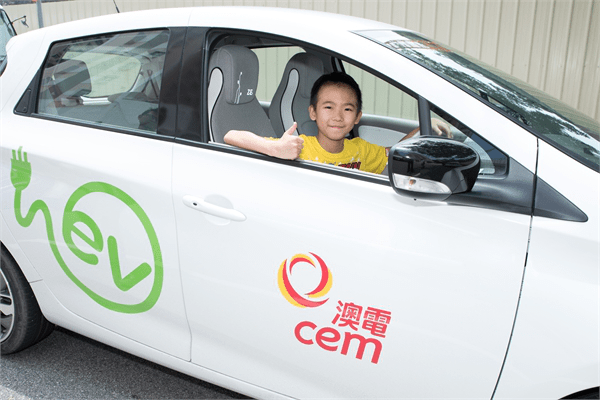
More information on charging fees
Source: Gabinete para o Desenvolvimento do Sector Energético (GDSE)
Release Date: 3 September 2020
Office for the Development of Energy Sector of Macau previously issued a press release explaining the government’s policies and measures to promote “self-use charging facilities for daily use and public charging as supplementary”. The government has started with installing 200 public charging spots for public use and meanwhile explained the benefits of installing medium/low-speed chargers at private parking spaces to encourage daily charging with self-use charging facilities.
The press release also mentioned that fees will be charged for using public EV charging stations, arousing citizens’ concern. As for the pricing approach, the government considers that the fees for private charging should be lower than that of public charging stations, with the purpose to incentivizing residents to install low/medium-speed charging equipment in their private parking places.
In addition to the installation and maintenance costs, the power consumption is another factor that explains the fee imposition for public charging facilities to ensure long-term operation. For example, the government is considering setting the fee for public fast charger at a level higher than household electricity fee but lower than fuel cost per kilometer. The Office for the Development of Energy Sector of Macau is studying the fee levels and will announce the details in due course.
Private installation of medium/slow chargers has multiple benefits
Source: Gabinete para o Desenvolvimento do Sector Energético (GDSE)
Release Date: 30 July 2020
To build a green tourism city, air quality must be improved from different aspects. As part of Macau's air pollutants comes from vehicle exhaust emissions, the government is actively promoting the use of eco-friendly vehicles, with EVs in the spotlight. With the technological progress and mass production of EVs, more models are available for selection and their prices may drop to the levels close to traditional fuel vehicles, making them popular among more users.
In order to further promote the use of EVs, the government would work with the public to make “private charging facilities for daily use and public charging as supplementary” happen. The government will first build public charging points for journey pit-stops, while the public are encouraged to install their own chargers at private parking spaces for daily battery top-up.
Of the 200 public charging parking spaces first proposed by the government in the "Five-Year Development Plan (2016-2020)", 196 have been in place, covering 42 public parking lots under the jurisdiction of the DSAT (with a coverage rate of 80%) ) and six parking spaces on public road (commonly known as "metre parking spaces"); the installation of the remaining four chargers at a metre parking space area has been sped up to go along with the road works in the respective area. These 200 public charging spaces will answer the needs for mid-journey charging in the medium to long run in Macau.
In terms of convenience and economic benefits, citizens are advised to install their own chargers at private parking spaces for daily use and charge up the battery at night. Quick chargers incur higher installation costs and may shorten the battery life as well as waste grid resources. Meanwhile, the fee for public charging will be imposed, and new fee for private charging will be cheaper than that of public charging. Therefore, citizens are encouraged to install self-use slow and medium chargers at residential parking spaces, which will be more convenient and economical. Besides, charging EV batteries with slow/medium chargers in the night time can extend battery life, improve grid efficiency, as well as protect the environment.
At present, the Law No. 14/2017 allows minority owners to carry out electric engineering works in common parts of the building by posting notices of works to simplify the installation procedures. Moreover, CEM can also provide advice on electric wiring to the applicants. Residents living in the same building can collaborate to install private chargers in order to facilitate installation and share the cost. Coordination between residents and property management offices or committees are encouraged to facilitate installation. The government would direct CEM to provide full support in this regard.
With medium/slow chargers at private parking spaces, users enjoy multiple benefits:
- charging EV battery anytime;
- slowing the ageing of EV batteries and extending their service life to save money;
- spending less on facilities, installation, electricity and electrical work compared to fast chargers;
- improving grid efficiency and protecting environment through night-time charging; and
- more convenient and cost-effective compared to public chargers, which will incur higher fees.


